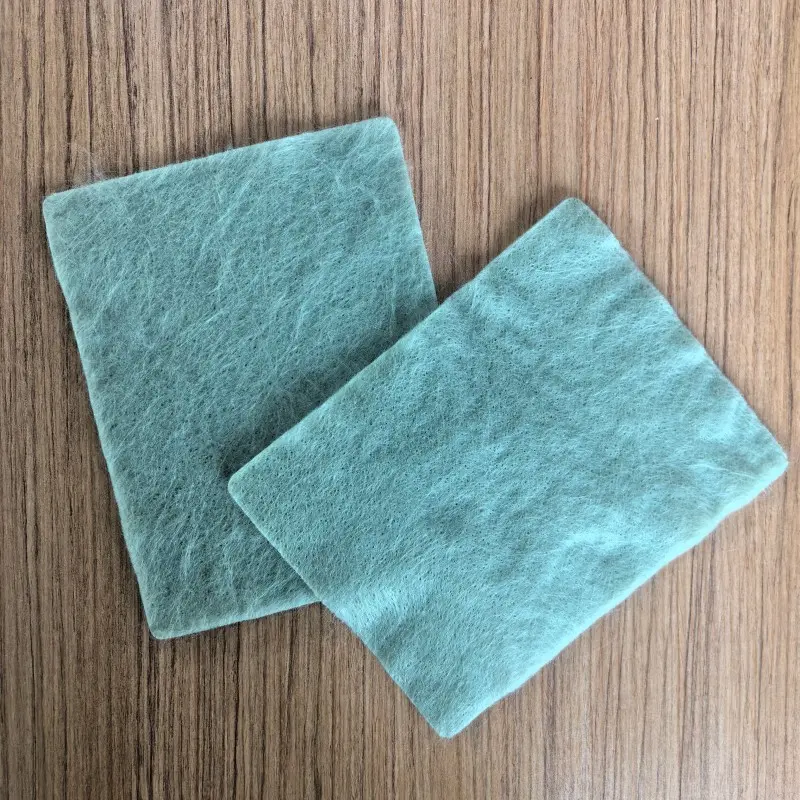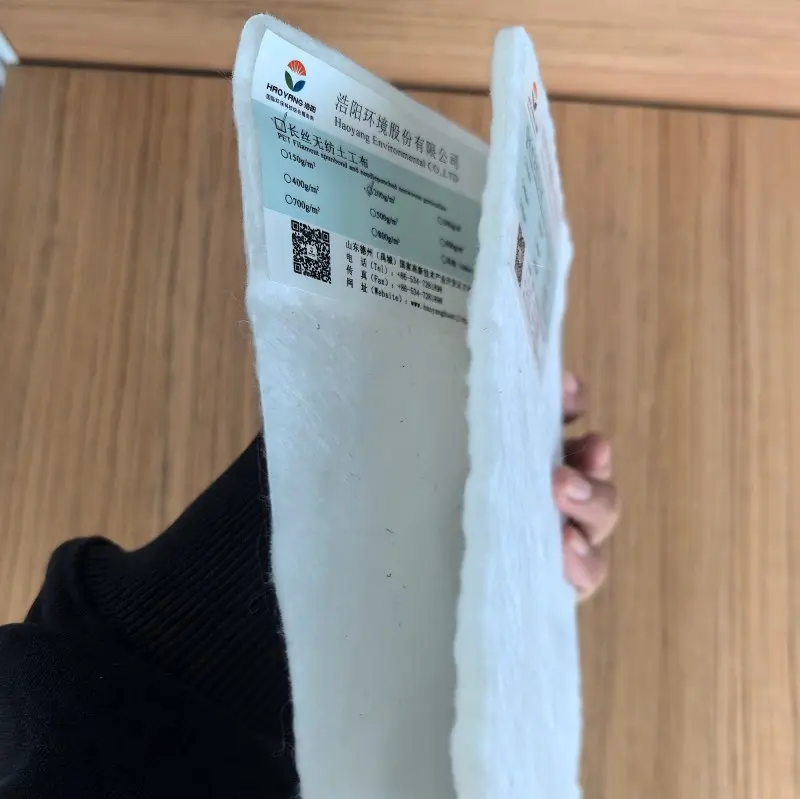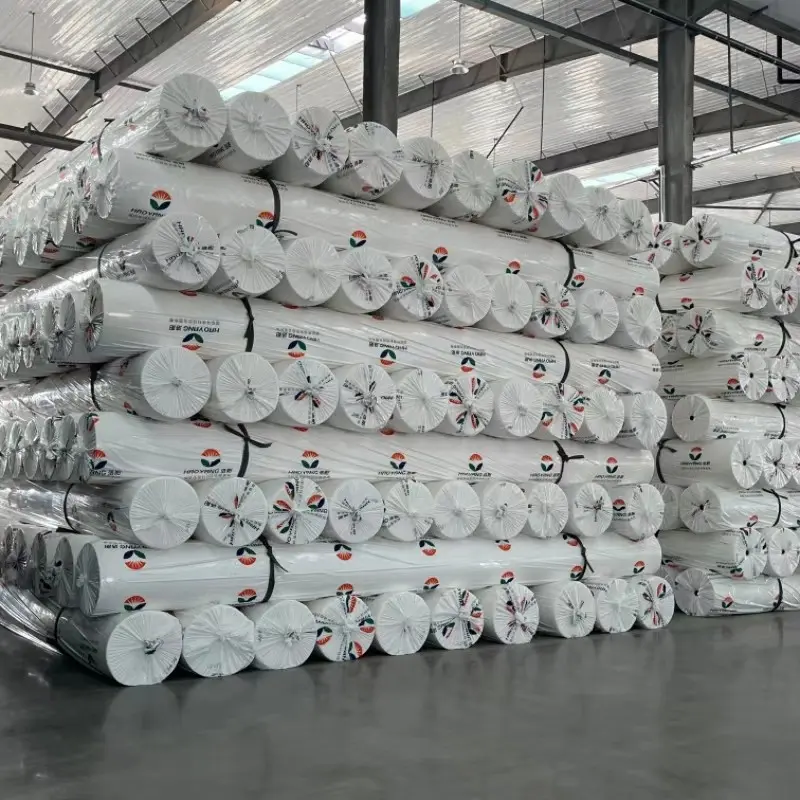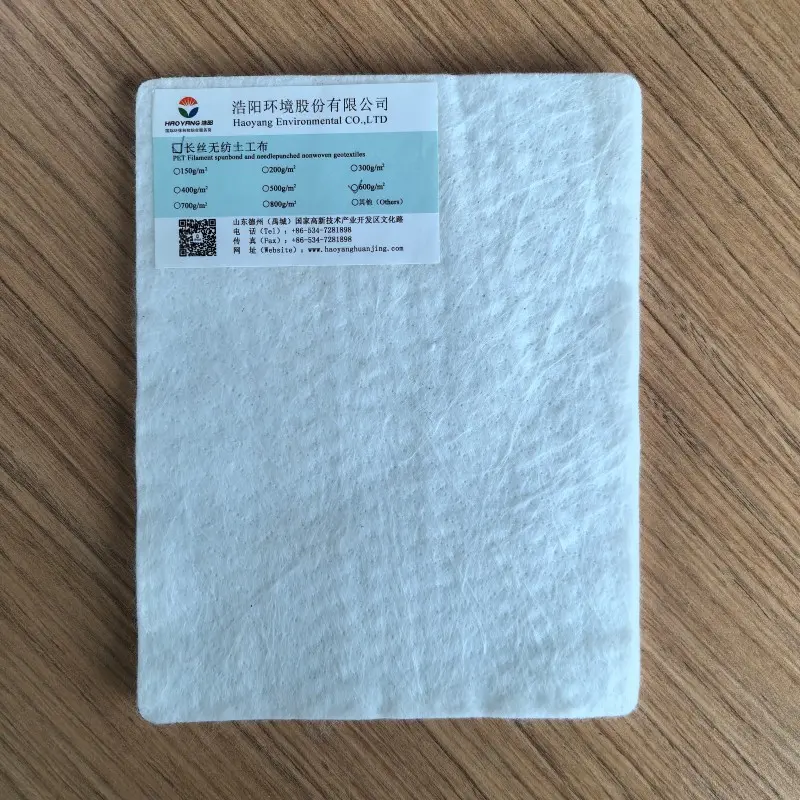This article provides an in-depth analysis of geotextile fabric costs, including specifications, pricing, main applications, and a guide on how to calculate the amount and cost required for a construction site. We will also explore the factors that influence the cost of procuring geotextile fabric directly from the factory.
What is Geotextile Fabric?

Geotextile fabric is a permeable textile material made from synthetic fibers such as polypropylene or polyester. It is designed to enhance the performance of soil by providing separation, filtration, drainage, and reinforcement. There are two primary types of geotextile fabrics:
Woven Geotextile Fabric: Made by weaving polypropylene or polyester fibers together, this type of geotextile fabric is strong and ideal for applications requiring high tensile strength, such as road construction and soil reinforcement.
Non-Woven Geotextile Fabric: Produced through needle-punching or heat-bonding processes, non-woven geotextile fabric is used for filtration, drainage, and separation applications.
Specifications of Geotextile Fabric

Geotextile fabric is available in various specifications, depending on the project requirements. Below is a detailed specifications table for different types of geotextile fabric:
| Specification | Woven Geotextile Fabric | Non-Woven Geotextile Fabric |
|---|---|---|
| Material | Polypropylene, Polyester | Polypropylene, Polyester |
| Thickness | 0.5 mm - 3.0 mm | 1.0 mm - 10.0 mm |
| Weight | 100 g/m² - 400 g/m² | 80 g/m² - 1000 g/m² |
| Tensile Strength | 20 kN/m - 100 kN/m | 10 kN/m - 80 kN/m |
| Elongation at Break | 10% - 35% | 30% - 100% |
| Water Permeability | Moderate | High |
| Roll Width | 1 m - 6 m | 1 m - 6 m |
| Roll Length | 50 m - 100 m | 50 m - 100 m |
| UV Resistance | Moderate | High |
| Temperature Range | -30°C to 100°C | -30°C to 100°C |
| Color | Black, White, Gray | Black, White, Gray |
These specifications help in selecting the right type of geottextile fabric based on the project requirements, such as strength, permeability, and environmental conditions.
Price list of Geotextile Fabric
The cost of geotextile fabric varies depending on the type, specifications, quantity, and supplier. Below is a general price range for different specifications:
Cost list of Geotextile Fabric
The cost of geotextile fabric varies depending on its type, weight, and specific properties. Below is a detailed price list categorized by type, providing an overview of the typical price ranges for different geotextile fabrics:
1. Woven Geotextile Fabric cost
Woven geotextile fabric is known for its high tensile strength and is used in applications requiring soil stabilization and reinforcement. The following is the cost list of woven geotextiles.
| Weight (g/m²) | Tensile Strength | Price Range (USD/m²) |
|---|---|---|
| 100 - 150 | 20 - 30 kN/m | $0.50 - $0.80 |
| 200 - 250 | 30 - 50 kN/m | $0.80 - $1.20 |
| 300 - 400 | 50 - 70 kN/m | $1.20 - $1.80 |
| 400 - 600 | 70 - 100 kN/m | $1.80 - $2.50 |
| 600+ | 100 - 120 kN/m | $2.50 - $3.50 |
2. Cost of Non-Woven Geotextile Fabric
Non-woven geotextile fabric is widely used for filtration, drainage, and separation applications due to its high permeability and flexibility. The following is the cost list of Non-woven geotextiles. Here is the price list of non-woven geotextile fabric
| Weight (g/m²) | Tensile Strength | Price Range (USD/m²) |
|---|---|---|
| 80 - 100 | 10 - 15 kN/m | $0.40 - $0.60 |
| 150 - 200 | 15 - 30 kN/m | $0.60 - $0.90 |
| 250 - 300 | 30 - 40 kN/m | $0.90 - $1.50 |
| 350 - 500 | 40 - 60 kN/m | $1.50 - $2.50 |
| 500+ | 60 - 80 kN/m | $2.50 - $4.00 |
3. Cost of High-Strength Geotextile Fabric
High-strength geotextile fabric is designed for heavy-duty applications, such as reinforcement in embankments, retaining walls, and road construction. Here is the price list of high-Strength Geotextile Fabric.
| Weight (g/m²) | Tensile Strength | Price Range (USD/m²) |
|---|---|---|
| 200 - 300 | 50 - 100 kN/m | $1.00 - $2.00 |
| 300 - 400 | 100 - 150 kN/m | $2.00 - $3.50 |
| 400 - 500 | 150 - 200 kN/m | $3.50 - $5.00 |
| 500+ | 200 - 300 kN/m | $5.00 - $7.00 |
4. Cost of Biodegradable Geotextile Fabric
Biodegradable geotextile fabric is made from natural fibers like jute or coir and is used for temporary erosion control and landscaping.Here is the price list of biodegradable geotextile fabric.
| Material | Weight (g/m²) | Price Range (USD/m²) |
|---|---|---|
| Jute | 400 - 600 | $0.80 - $1.20 |
| Coir | 700 - 900 | $1.20 - $1.80 |
| Coir + Jute | 1000+ | $1.80 - $2.50 |
5. Cost of Geocomposite Geotextile Fabric
Geocomposite geotextile fabric combines geotextiles with other materials like geogrids or geomembranes for enhanced performance in complex applications.Here is the price list of geocomposite geotextile fabric.
| Type | Specification | Price Range (USD/m²) |
|---|---|---|
| Geotextile + Geogrid | 200 - 300 g/m² | $2.50 - $4.00 |
| Geotextile + Geomembrane | 300 - 400 g/m² | $3.00 - $5.00 |
| Geotextile + Drainage Net | 400 - 600 g/m² | $4.00 - $6.50 |
Note: The above prices are for reference only, and they vary from time to time, depending on market conditions, raw material suppliers, order quantities, and customization options. To obtain the most accurate and up-to-date pricing, it is recommended to contact us directly.
By understanding the different price ranges for each type of geotextile fabric, businesses and project managers can make informed decisions based on their specific project requirements and budget constraints.
Prices can fluctuate based on market conditions, raw material costs, and specific project requirements. Bulk purchases usually result in lower per-unit costs, making it economical for large-scale projects.
Main Applications of Geotextile Fabric
456458.webp)
Geotextile fabric is used in a wide range of applications in construction and civil engineering:
Soil Stabilization:
Geotextile fabric provides stability to weak soils by distributing loads and preventing the mixing of different soil layers. It is commonly used in the construction of roads, railways, and embankments.
Erosion Control:
It prevents soil erosion by protecting slopes and embankments from wind and water erosion. It is often used in coastal protection and riverbank stabilization projects.
Drainage Systems:
Geotextile fabric facilitates the flow of water while preventing soil particles from clogging drainage systems. It is widely used in subsurface drainage systems and retaining wall backfill.
Filtration:
It acts as a filter by allowing water to pass through while retaining soil particles. This application is critical in preventing soil loss in various hydraulic engineering projects.
Separation:
Geotextile fabric separates different layers of soil, preventing contamination and ensuring the integrity of the construction structure. It is used in the construction of roads and pavements.
How to Calculate Geotextile Fabric Usage and Cost for Construction Sites
474014.webp)
Calculating the required amount of geotextile fabric and its cost for a construction project involves several steps:
Calculate the Area to be Covered:
Measure the length and width of the area where the geotextile fabric will be installed.
Formula: Area = Length × Width
Example: For a road project with a length of 200 meters and a width of 5 meters, the area would be 200 × 5 = 1000 m².
Factor in Overlap and Wastage:
Geotextile fabric should be installed with a minimum overlap of 0.3 to 0.5 meters. Add 5-10% to the total area to account for overlaps and potential wastage.
Formula: Total Area = Area + (Area × Overlap Factor)
Example: For a 1000 m² area, with a 10% overlap factor, the total area would be 1000 + (1000 × 0.1) = 1100 m².
Determine the Quantity of Rolls Required:
Based on the roll width and length, calculate the number of rolls required.
Formula: Number of Rolls = Total Area / (Roll Width × Roll Length)
Example: If using rolls that are 2 meters wide and 50 meters long, each roll covers 100 m². Therefore, the number of rolls required is 1100 / 100 = 11 rolls.
Calculate the Cost of Geotextile Fabric:
Multiply the total area by the unit price of the chosen geotextile fabric specification.
Formula: Total Cost = Total Area × Unit Price
Example: If the chosen fabric costs $1.50/m², then the total cost would be 1100 × 1.50 = $1650.
Cost of Procuring Geotextile Fabric from the Factory

Purchasing geotextile fabric directly from the factory can result in significant cost savings, especially for large projects. Factors influencing the cost from the factory include:
Quantity Ordered:
Bulk orders typically receive discounts, reducing the overall cost per square meter.
Customization:
Factories can produce geotextile fabric in specific sizes, thicknesses, and strengths based on project requirements. Custom orders may have a different cost structure compared to standard products.
Shipping and Logistics:
The cost of transporting the fabric from the factory to the construction site can vary based on the location and the volume of the order. Factoring in shipping costs is crucial for accurate budgeting.
Payment Terms:
Factories may offer better pricing for upfront payments or long-term contracts. Negotiating payment terms can help in managing project cash flow effectively.
Conclusion
Understanding the cost of geotextile fabric is essential for efficient project planning and budgeting. By considering the specifications, main applications, and accurate usage calculation, project managers can estimate the total cost and select the right type of geotextile fabric for their needs. Procuring geotextile fabric directly from the factory can offer cost advantages, but it's important to consider factors such as quantity, customization, and logistics. For detailed pricing and further assistance, it is recommended to consult with reputable suppliers or manufacturers.

897.webp)
942.webp)
237.webp)